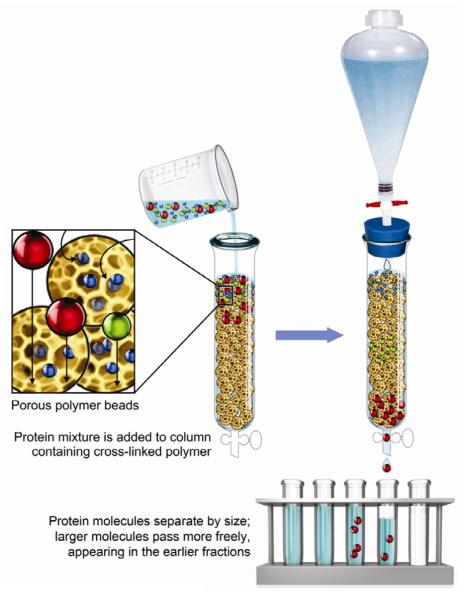Figure 1.
Schematic showing gel-permeation or size-exclusion column chromatography. A column is filled with hydrophilic cross-linked polymers (for instance, dextrans) that allow small molecules access to polymer water, but do not allow access to larger molecules like albumin. The albumin comes through the column rapidly because it only has access to “interstitial” fluid between the polymer beads. Small molecules come out of the column later because they diffused into a larger volume. In the current study, mineralized dentin powder was used as the separating medium. Before demineralization, dentin powder contained very little water because collagen fibrils were filled with apatite crystallites. After complete demineralization of dentin, collagen fibrils became filled with water. (Modified from Fig. 3–17 in Lehninger's Principes of Biochemistry, 5th ed., by Nelson DL and Cox MM, W.H. Freeman and Co., New York, 2008, p. 87, with permission).

